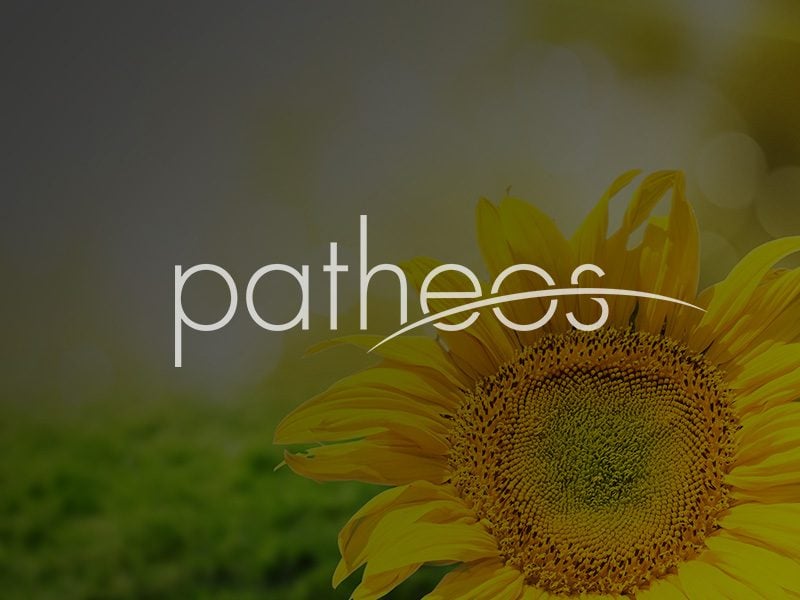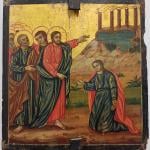Last updated on: March 6, 2015 at 11:13 am
By
CNA Daily News
Washington D.C., Mar 6, 2015 / 04:13 am (CNA).- Read the headlines of major news outlets and you might think women’s fertility is an unknowable force understandable only by “voodoo” or some other inscrutable form of divination. Women wishing to avoid pregnancy have to use pills, implants or a physical barrier to keep their fertility in check, and women facing difficulties attaining pregnancy must hand over thousands of dollars for artificial reproductive technologies, the conventional wisdom says. However, the science behind fertility awareness shows that women can know what their bodies do and make decisions based on that information – and now, a Colorado app developer and a New York City filmmaker are among those doing their best to bring this knowledge to popular attention. Dr. Victoria Jennings, a professor of obstetrics and gynecology and the director of the Institute for Reproductive Health (IRH) at Georgetown University Medical Center, told CNA that there are a number of “myths and rumors” that persist about fertility awareness methods. “The reality is that natural methods or fertility-awareness based methods of family planning can be extremely effective,” she said, explaining that “there are several fertility awareness methods” with differing protocols. Many of natural methods do not require a woman’s cycle to be regular in order to work, she continued, with most natural methods relying on awareness of a woman’s day-to day fertility signs. Scientific studies, including ones published in 2007 and in 2009 have shown these methods to be highly-effective, comparable to many of the most effective means of artificial contraceptives for postponing pregnancy. These fertility awareness-based methods, Dr. Jennings explained, are “all based on a woman’s ability to observe the changes that occur in her body over her menstrual cycle.” These changes, she elaborated, “are triggered by her hormones” and include variations in body temperature, cervical mucus and physical changes in the cervix. “The symptothermal method specifically relies on changes both in temperature and in secretions” while other methods instead track variations in secretions or temperature or hormone monitoring. The Catholic Church teaches that while spouses are called to discern whether they are called to expand their family at a given time, it is immoral to use contraceptive pills, implants, barrier methods or having incomplete intercourse. Instead, the Church teaches that couples wishing to delay pregnancy at a given time are called towards periodic abstinence during the wife’s fertile window. This is known as Natural Family Planning (NFP). Couples using Natural Family Planning use the woman’s observations about her fertility for health knowledge or to help make choices about family planning. To avoid pregnancy, couples practicing fertility awareness avoid intercourse on days in which the woman observes fertile symptoms. To achieve a pregnancy, they do the reverse. The idea of natural fertility monitoring is catching on in non-religious circles as well. Some non-religious proponents of these methods accept the use of barrier contraceptives – such as a condom – during a woman’s fertile window, departing from the Catholic Church’s teaching that all contraception, whether hormonal or physical, deters the sexual act as it was intended by God. Still, the basic idea of more natural forms of family planning are appealing to couples across the globe. “The primary reason that people give around the world is because it doesn’t have any side effects, it doesn’t affect my fertility or my health,” Dr. Jennings said. Others use fertility awareness-based methods because they “find it empowering” to understand their bodies, she continued. Monitoring fertility signs can help to alert women to cycle irregularities that “need to be checked out by a provider,” including those that may flag health problems or difficulty conceiving. One set of app developers from Colorado is trying to dispel the continuing misunderstandings surrounding fertility awareness-based methods and educate the public on how people’s bodies work. “One of the huge problems is that there is a lot of misinformation about FAM out there and not only that but this misinformation is coming from very prominent websites and trusted sources that people generally really trust for unbiased, accurate information,” said Lauren Risberg, Customer Support and Content Lead for Kindara, an iOS app offering charting tools and support for recording a woman’s fertility symptoms and temperature. Recently, Kindara has released a “Fertility Awareness Report Card,” grading health websites and reproductive health educators such as Wikipedia, WebMD, Planned Parenthood and the Centers for Disease Control on the accuracy of information they provide on fertility awareness-based methods. “Over the past couple of decades, fertility awareness has been studied a lot. We know scientifically, based on evidence now, that it does work, and it works very well if you use it correctly. I feel that these websites that people trust have an obligation to look at that and update their information to reflect the most recent scientific evidence on the method,” Risberg told CNA. She explained that Kindara did not set out to “attack” these websites, but also felt there was a strong need to correct medical misinformation. “I don’t think it’s fair to the women who are using these resources for information,” she said. “These women have the right to know the truth behind all the options that are available to them.” Risberg also argued for the need to educate the public more broadly about the existence of fertility awareness, and pointed out that technology can help play a role in making these methods more accessible. “In our culture generally there’s this idea that we can’t really trust our own bodies, or that we shouldn’t, or that we need to medicate things away” and thus “a lot of women don’t really know this is an option for them,” she said. However, “you don’t need to take a pill to control your fertility,” she emphasized. “You just learn how your body works and adjust your behavior.” In addition to simply keeping track of a woman’s fertility symptoms, fertility apps can help “make fertility awareness much more accessible to people, much more convenient,” Risberg said. “Anything that starts to break down those barriers of thinking fertility awareness is a big deal or is difficult helps men and women be more open to it.” Cassondra Moriarty, a New York City filmmaker and director of the recent short film “Miscontraceptions,” told CNA that she hopes her film can help educate, empower and expose women to the existence of fertility awareness-based methods. After learning about fertility awareness three and a half years ago from her now-husband, Moriarty felt compelled to help educate others about these methods. In interviewing women and their knowledge of these methods, she said, one of the biggest challenges “is that you can easily get misinformation about it.” Also, she pointed out in the film, many women just don’t know fertility awareness-based options are even available. She hopes to “make more women aware of this option” by making a film for film festivals and screenings. Moriarty also hopes that her film will let women “walk away and feel empowered.” Our culture, she said, tends to be “a little scared of our bodies,” with many women feeling out of control of their own bodies, even when using artificial drugs or devices, “because the device is in control, the hormones are in control.” Instead, Moriarty said, she thinks that “no woman should ever feel dirty or confused” because of a “perfectly normal healthy functioning part of their body,” such as healthy symptom changes or temperature variations. “I want my daughters to know that cervical fluid is not only normal, but it's 100 percent healthy.” This need for education and empowerment “has a long way to go,” even within the Catholic Church, said Moriarty, who is herself Catholic. “Even in the Church, there's so many people who don't know about NFP,” she said, explaining that in addition to being a morally acceptable way of spacing pregnancies, she felt that fertility awareness knowledge helps couples be “more in tune, in regards to being more open to life.” Even with these challenges of misinformation and the long journey of education ahead, Moriarty said that her experiences showing the film have left her hopeful. One experience in particular during a showing in Portland, Oregon left her thinking that this movement towards natural fertility is “up-and-coming.” After screening the film, Moriarty explained, “a girl said to me, 'I have an IUD, I got it a couple of months ago' and she said 'I want this foreign object out of my body now'.” “It was so fulfilling for me because I didn't say that, I didn't put those words in their mouths. They realized what they were hungry for: empowerment and knowledge.” Read more















